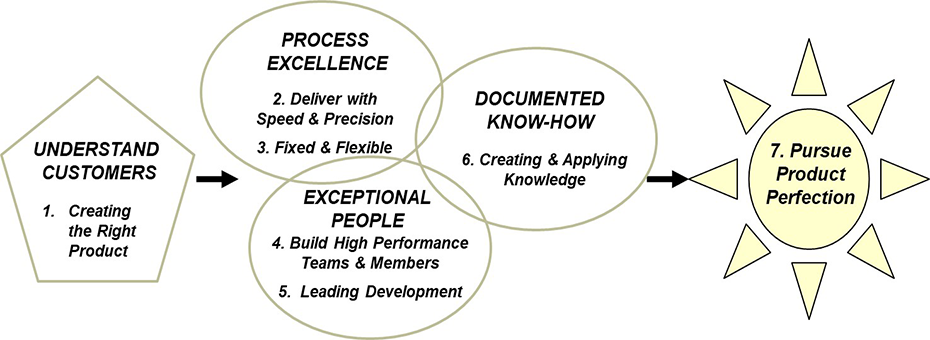The traditional way of developing new products or services in isolation from the processes that must deliver them almost guarantees problem launches. In contrast, lean product and process development shows us how to create products customers love and profitable delivery processes in a far more integrated and simultaneous way.
The result is a steady stream of better products and services for customers and better futures for companies, employees, and stakeholders. Eric Ethington, an experienced lean product and process coach, spoke about this topic recently with LEI’s Chet Marchwinski.
Q: You’ve written that troubleshooting and chaos are all too common with product launches after the start of production. The organization scrambles to fix problems while fulfilling orders and maintaining quality. How can managers avoid troubled launches?
Eric: One of the best ways is just to think upfront about what is success supposed to look like and put some measures around that and then track towards them as you’re developing the new process and the new product.
A lot of times, organizations look at result metrics after the product is launched and realize there’s too much labor in it or the quality is not where it’s supposed to be. You want to discover that before you’re trying to fill orders to the customer.
Q: It sounds like companies should put more thought into profitable process design during product development. Why don’t they do that now?
Eric: I’d say there are three reasons. One is just a lack of awareness of thinking about lean principles in the process during development. There’s a lot of emphasis on lean in the process after the product is launched, which is traditional kaizen. But a lot of us jokingly talk about kaizen as actually being a rework loop in and of itself. How can we avoid process problems in the first place?
There’s also a category of folks who have attempted to take lean concepts that worked in manufacturing and copy and paste them exactly upstream into engineering. Lean looks a little bit different in engineering because it’s knowledge work.
In the third category are organizations that have tried it and realized that to do it right, is a lot of hard work. You have to get into the details of the work people are doing and really understand it at a detailed level. The real benefit comes from understanding the detail of the work and actually improving that.
Q: A lot of the kaizen events in production then may not be necessary if waste had been identified and eliminated upstream in development?
Eric: There’s always that opportunity to improve, but, boy, you see a lot of new stuff go into production where it’s like déjà vu all over again; we launched a year ago and had similar issues, and we’re doing it again.
Q: Are there core elements of lean process design that people should be aware of?
Eric: In general terms, you work backward from a launch phase that happens right before you start production. If you step back before that, there is some sort of installation phase. Before that, there’s a detailed design phase. Before that, there is a phase that involves looking at multiple options and converging those down to the one you’re going to pursue, but in the process area.
If you back up one more step, have a good context of what it is you’re really trying to achieve. What are the product and process supposed to be? What will make them successful? Where do they fit in the marketplace?
Q: How does someone get started with lean product and process development?
Eric: This is something that’s best learned on the job. Run an experiment and learn from that. There’s nothing wrong with finding a good workshop — we’re going to do one at our summit in June.
That gets you some education on some of the concepts. Where you’re really going to learn is trying it. You’ll learn best trying it with a coach who knows what they’re doing. The best place to start is there.
Designing the Future
An Introduction to Lean Product and Process Development.






